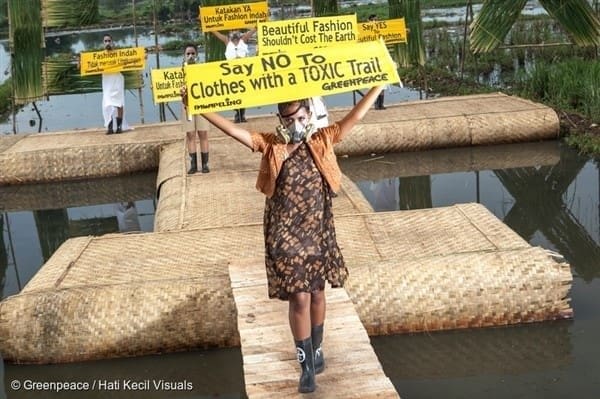INTRODUCTION:
It has been 7 decades since India got Independence from the British Raj. Since then, there have been tremendous changes in various main fields and so has the fashion industry in India. Like all the major fields, the fashion industry has also seen a lot of highs and lows, and the fashion industry we see today is a lot different from where their journey started.
Sarees have been the versatile women’s clothing, whereas Dhoti has been the clothing of the men over the age. Independent India began with ethnic wears such as salwar kameez, lehenga, sherwani, lugda, lungi, etc. and khadi clothes like the Nehru Jacket, etc. With the introduction to the western world and the British rule, Indians were exposed to western form of clothing like skirts, dresses, gowns, blazers, tuxedos, trouser and pants. All these trendy clothes along with the latest up gradation happening has now created a fashion image which projects India to the world.
The textile industry in India is among the largest segment of India’s capital goods sector. As per the report published by Indian Brand Equity Foundation (IBEF), India is the second largest exporter of textiles in the world.
Fashion is fast and continuous growing business and with this high accelerating rate there are some loop holes that should be discussed: –
- FAST FASHION:
In today’s times fast fashion is considered to be a monster in almost every person’s closet. It has become a challenge to wear a garment more than 5 times. Although there has been a rapid production of various garments, the product quality is deteriorating thus making clothes look faded, shapeless or worn out. Trends are changing so quickly that consumers can’t keep up. Fast fashion is also defined as “Mass production of cheap, disposable clothing. Countless new collections making people feel out of date and encourage them to buy more and more new clothes at the same time.
- FASHION’S ENVIRONMENTAL IMPACT:
The fashion industry is a major water consumer. Huge quantities of fresh water are used for dyeing and finishing process. It approximately takes up to 200 tons of freshwater per ton of dyed fabric. Cotton is usually cultivated in warm and dry areas, although in order to produce 1 kg of cotton it requires around 20,000 litres of water.
The fashion industry is the second largest polluter in the world just after the oil industry. Untreated toxic wastewater are let directly into the rivers, thus causing water pollution. These untreated toxins in place affect the aquatic life and the lives of those living by the banks of those rivers. The contamination also reaches the sea and eventually spreads across the globe.
- WASTE PROBLEM OF THE FASHION INDUSTRY:
The fashion industry, responsible for 10% of the world’s carbon emissions. As we all know clothing has become disposable. In today’s times, a family in the western world throws away an average of 30kg of clothing each year, out of which only 15kg is recycled or donated, and the rest goes directly to the landfill or is incinerated. Depending on the material of the garments, the time varies for decomposition of the garment. Materials like leather takes about 25 to 40 years in order to decompose. Synthetic fibers like polyester are plastic fibers, therefore non-biodegradable and can take up to 200 years to decompose. Synthetic fibers are used in 72% of the clothing industry.
- CHEMICALS IN THE FASHION INDUSTRY:
Chemicals are one of the main components in the clothes. These chemicals are used during fibre production, dyeing, bleaching and wet processing for each and every garment produced. The huge amount of chemicals used for manufacturing cotton is causing diseases and premature death among the cotton farmers. These chemicals also lead to degradation of massive freshwater and ocean water pollution as well as soil degradation. Some of these chemicals are also dangerous for the customer purchasing these garments.
- WORKING CONDITION IN THE FASHION INDUSTRY:
In the fashion industry there is no fixed duration to how many working hours an individual has to work for in order to achieve the organisation’s desired objectives. Clothes are made in countries where worker’s rights are limited or non-existent. Production sites are moving from one place to another looking out for cheaper labor costs. The European Parliament is using the term “Slave labor” to describe the current working conditions of garment industries in Asia. The employees working in the fashion chain are being paid only one fifth of the employees living wage. A living wage means the minimum capital required by a person/family to fulfill their basic needs.
SOLUTIONS ABOUT SOME OF THE PROBLEMS:
- About worker’s rights, consumers can choose clothes made in countries with stricter environmental regulations for factories. Like Canada, USA, etc.
- Choose organic fibers and natural fibers that do not require chemicals to be produced.
- About water consumption, choose fibers with low water consumption such as linen, recycled fibers, etc.
- About waste problem, choose natural or semi-synthetic fibers.
- Buy less, buy better quality and recycle.
- About the chemicals being used, choose organic fibers.
- Choose sustainable brands.
- Always wash new clothes before using them for the first time.
In today’s time, clothes being cheaper, available at numerous places and at a cheaper rate it is easy for a consumer to get carried away and buy more than necessary clothes. Today’s generation has 5 times more clothes than their grandparents once had, and that is a great feeling. But, at what cost?
ARTICLE BY:
VRIDHI BHAGNARI

